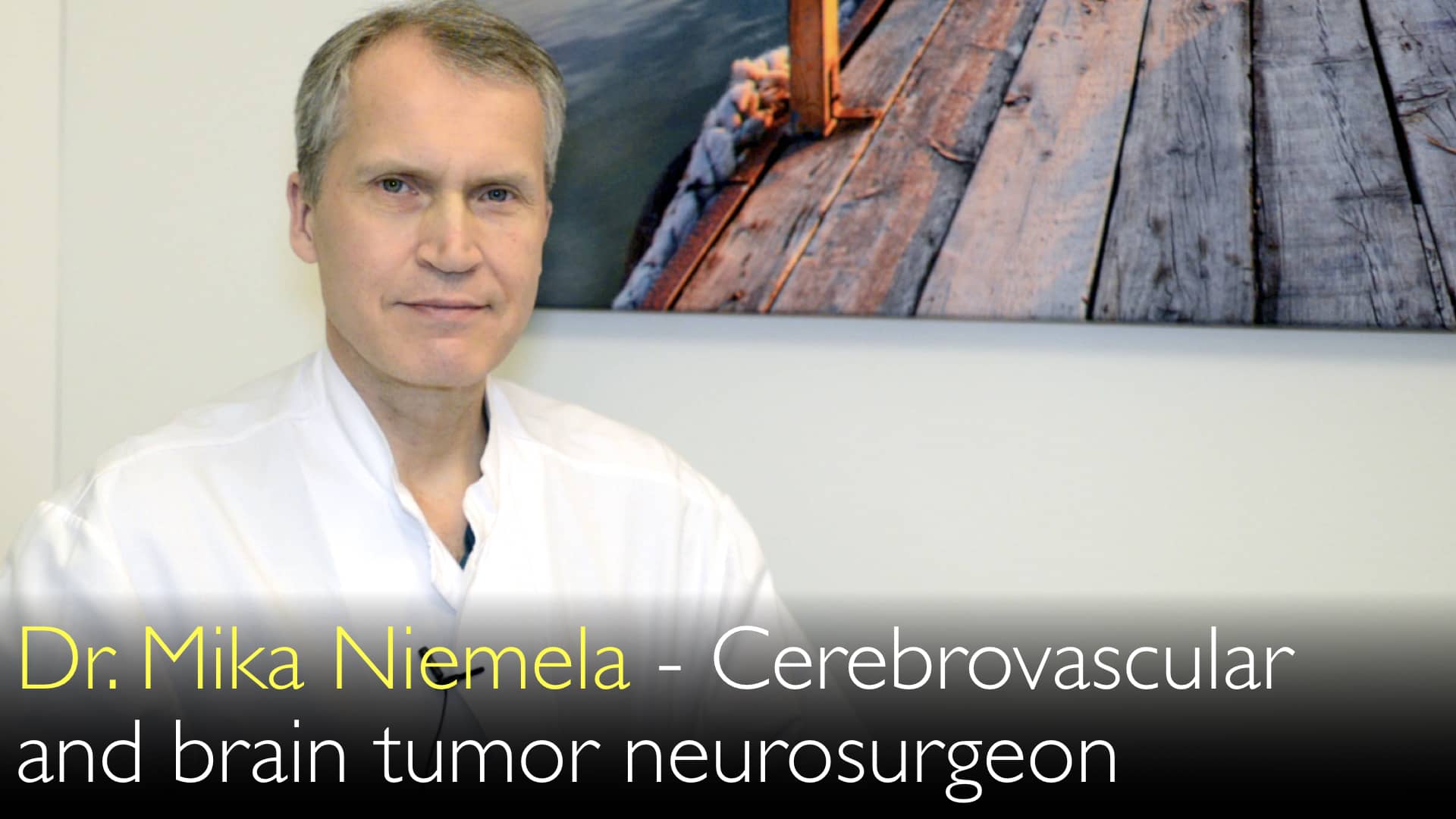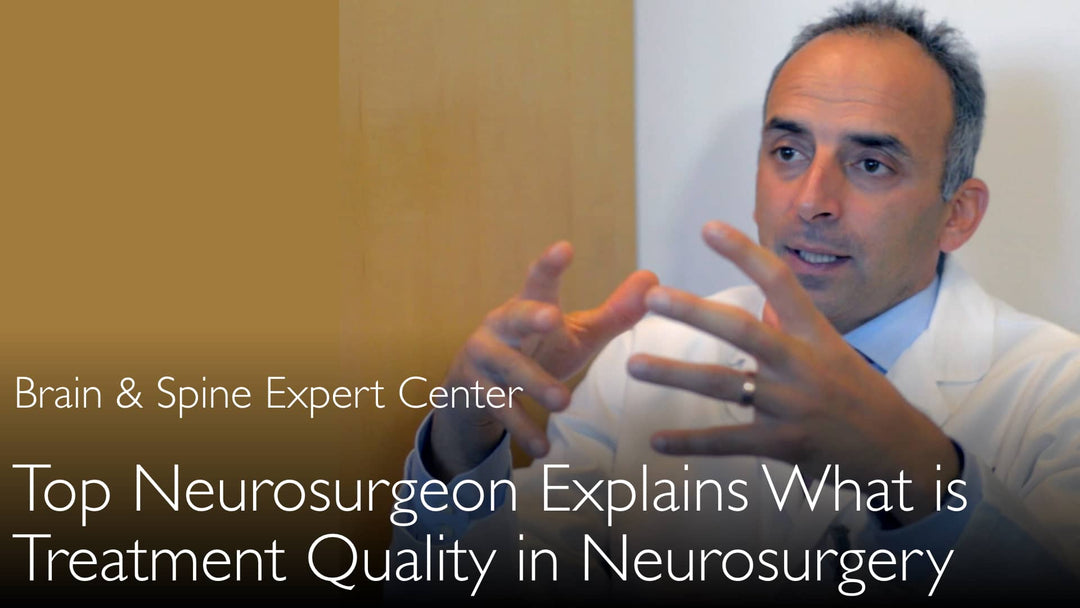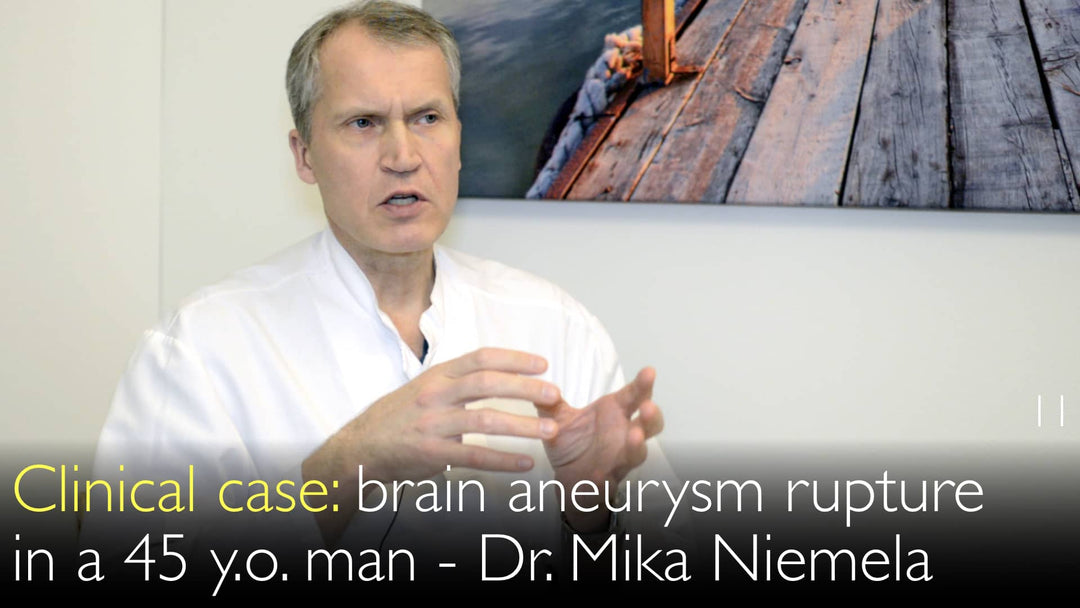Leading expert in cerebrovascular neurosurgery, Dr. Mika Niemela, MD, explains brain cavernous angioma bleeding risks. He details how hemorrhage risk depends on cavernoma location and size. Dr. Mika Niemela, MD, discusses different types of cavernoma bleeds and their impact on patient life. He compares early versus late treatment indications for symptomatic and asymptomatic lesions. The interview covers specific considerations for brain stem and spinal cavernomas, as well as treatment approaches in elderly patients.
Brain Cavernous Angioma Bleeding Risks and Treatment Decisions
Jump To Section
- Bleeding Risk Factors for Cavernous Angioma
- Types of Cavernoma Hemorrhage and Impact
- Early Versus Late Treatment Indications
- Special Considerations for Brain Stem Cavernomas
- Spinal Cavernous Angioma Management
- Cavernoma Treatment in Elderly Patients
- Full Transcript
Bleeding Risk Factors for Cavernous Angioma
Brain cavernous angioma bleeding risk assessment is critical for treatment decisions. Dr. Mika Niemela, MD, identifies two primary risk factors: lesion size and anatomical location. He states that deep brain location and larger cavernoma size correlate with higher hemorrhage risk. Interestingly, Dr. Niemela clarifies that conventional vascular risk factors like hypertension and smoking do not influence bleeding in these specific vascular malformations. Patients cannot modify their individual bleeding risk through lifestyle changes, as cavernoma behavior is primarily determined by intrinsic structural characteristics.
Types of Cavernoma Hemorrhage and Impact
Cavernous angioma bleeding manifests in different clinical presentations with varying impacts. Dr. Mika Niemela, MD, explains that hemorrhages can range from clinically silent microbleeds to significant symptomatic events. Some bleeds occur only on the brain surface without causing neurological symptoms. These minor hemorrhages might not require immediate intervention. However, other bleeds can cause substantial neurological deficits depending on the eloquent brain area affected. The clinical impact determines whether surgical intervention becomes necessary for cavernoma removal.
Early Versus Late Treatment Indications
Treatment timing for brain cavernous angioma depends on multiple clinical factors. Dr. Mika Niemela, MD, emphasizes that repeated cavernoma bleeding episodes worsen patient prognosis. This is particularly relevant for epilepsy risk development after multiple hemorrhages. Dr. Anton Titov, MD, discusses the clinical decision-making process with Dr. Niemela. They agree that asymptomatic cavernomas without bleeding history can often be managed conservatively with observation. However, symptomatic lesions or those with documented hemorrhage require different consideration. Surgical excision becomes indicated when the risks of future bleeding outweigh the risks of intervention.
Special Considerations for Brain Stem Cavernomas
Brain stem cavernous angiomas present unique management challenges due to their critical location. Dr. Mika Niemela, MD, highlights that even small hemorrhages in the brain stem can cause significant neurological problems. The compact anatomy of the brain stem means that minimal bleeding or swelling can affect multiple vital functions. Dr. Niemela advises against passive observation for brain stem cavernomas that have already bled. Treatment decisions must consider the specific location within the brain stem and the size of the lesion. The neurosurgeon must balance the natural history of the cavernoma against the surgical risks in this delicate region.
Spinal Cavernous Angioma Management
Spinal cavernous angiomas require particularly attentive management strategies. Dr. Mika Niemela, MD, explains that cavernomas in the spinal region can cause substantial problems when they bleed. The confined space of the spinal canal means that even moderate bleeding can compress neural structures. This compression can lead to significant neurological deficits. Dr. Mika Niemela, MD, emphasizes that surgical intervention is typically indicated once a spinal cavernoma has demonstrated bleeding behavior. The decision to operate balances the risks of surgery against the potential for catastrophic neurological injury from future hemorrhage.
Cavernoma Treatment in Elderly Patients
Elderly patients with brain cavernous angiomas often receive different management approaches. Dr. Mika Niemela, MD, notes that neurosurgeons tend to be more conservative with treatment in older populations. This conservative approach considers the patient's overall health status and potential surgical risks. Dr. Anton Titov, MD, discusses this age-specific management strategy with Dr. Niemela. Treatment decisions still depend on the cavernoma's symptoms, size, and location. However, the threshold for intervention may be higher in elderly patients compared to younger individuals. Most cavernomas across all age groups are managed through observation rather than surgical excision.
Full Transcript
Dr. Anton Titov, MD: Decision to treat brain cavernoma depends on assessment of bleeding risk from cavernous angioma. Hemorrhage risk depends on location of cavernoma in the brain.
Dr. Anton Titov, MD: What are the risk factors for brain cavernous angioma bleeding? What are the different types of bleeding of brain cavernoma? What type of hemorrhage from brain cavernous can affect patient's life?
Dr. Anton Titov, MD: What cavernous angioma bleeding types require early or late treatment of cavernous angioma in the brain?
Dr. Mika Niemela, MD: There are no known risk factors for brain cavernoma bleeding except the size and a deep location. But patients cannot affect the bleeding anyhow. Blood pressure and smoking have no meaning in these lesions.
Dr. Mika Niemela, MD: But if cavernous angioma is deep, if it's larger, then the risk of bleeding is higher.
Dr. Anton Titov, MD: How do you compare indications for early versus late treatment of brain cavernous angioma? You have done some clinical research on the brain cavernoma treatment outcomes.
Dr. Mika Niemela, MD: Sometimes the patient has several cavernoma bleedings. Then the prognosis is worse than if the cavernoma had been removed earlier. It applies to risk of epilepsy.
Dr. Mika Niemela, MD: This worse prognosis also applies to spine cavernoma. A cavernoma in the spine region could be a problem. Spine cavernous could cause a big bleeding. Then it's a problem. It's better to take cavernoma out at that point at the latest.
Dr. Anton Titov, MD: You should not passively observe patients with such cavernous angioma. But the bleeding from cavernous could be very small. Bleeding could be on the surface of the brain only. The patient could have no symptoms.
Dr. Anton Titov, MD: Then you may observe a patient with such cavernoma in the brain area. But you cannot observe patients with a brain stem cavernous angioma that has already bled.
Dr. Mika Niemela, MD: Because even a smaller bleeding in the brain stem may be difficult. But that also depends on the size and location of cavernoma within the brain stem.
Dr. Anton Titov, MD: You followed the patients with brain cavernoma who are elderly. Cavernous angioma treatment in the elderly patient could be different from a younger patient. We tend to be more conservative.
Dr. Anton Titov, MD: Cavernous angioma treatment depends on the patient's symptoms and size and location of the cavernoma. But not necessarily so. Most of the brain cavernomas are just observed. And sometimes we excise all of the cavernoma together.








